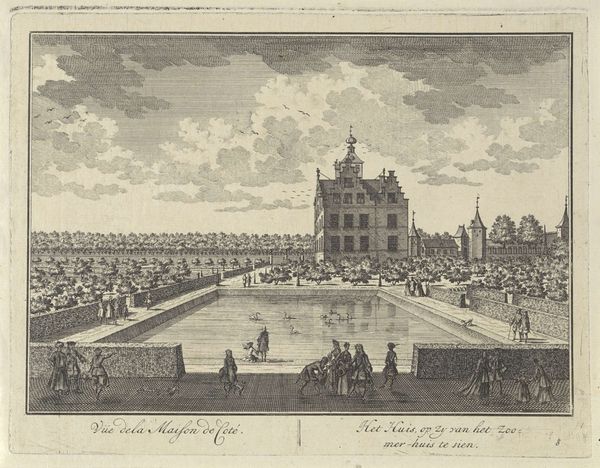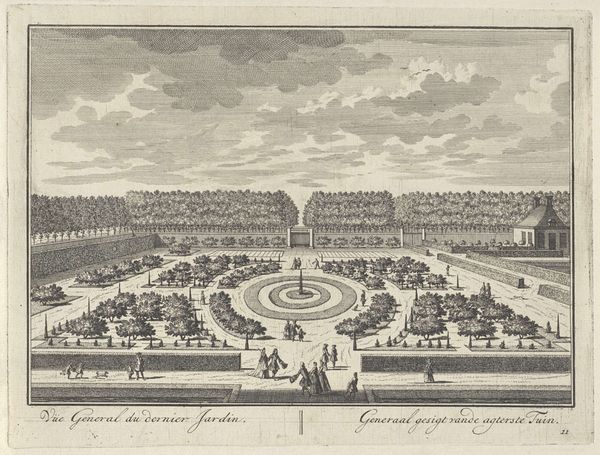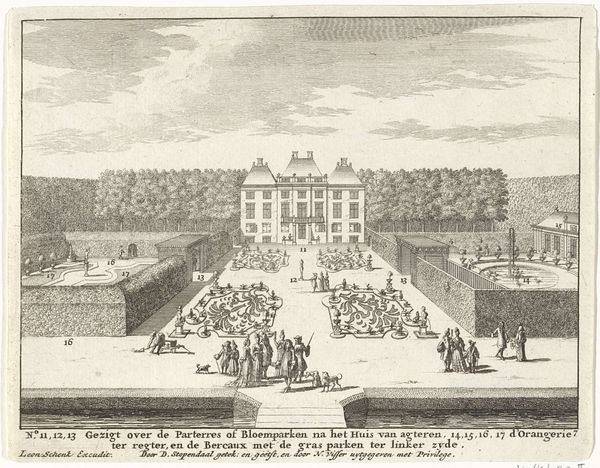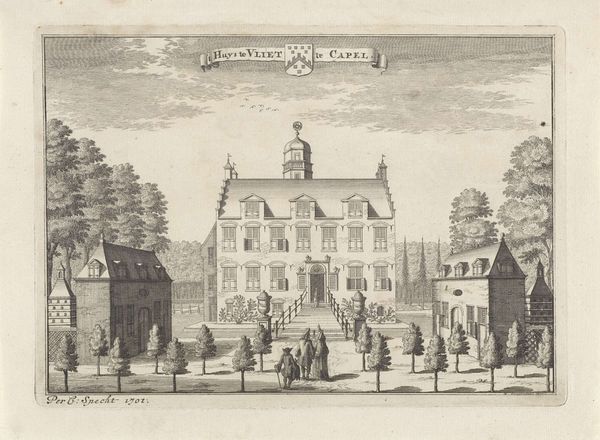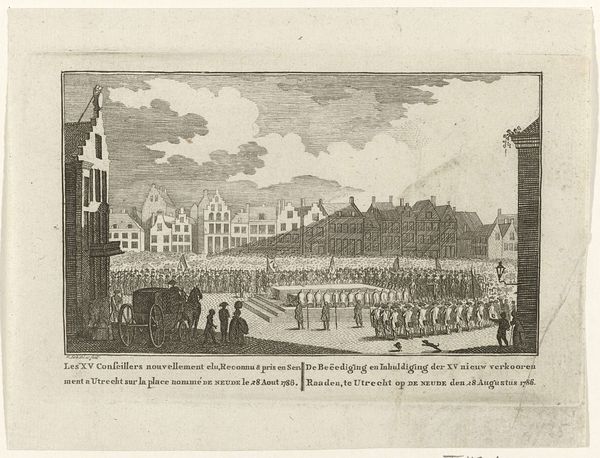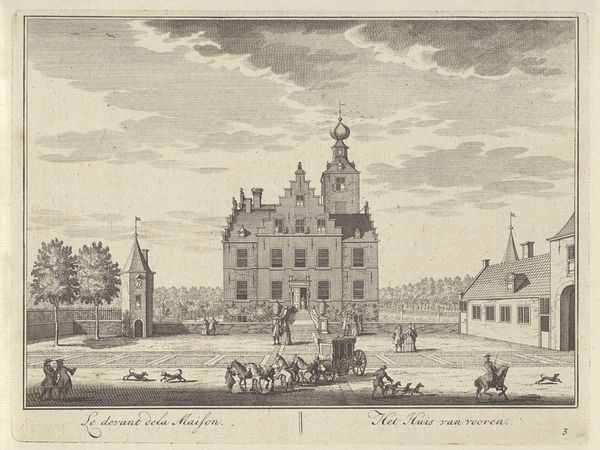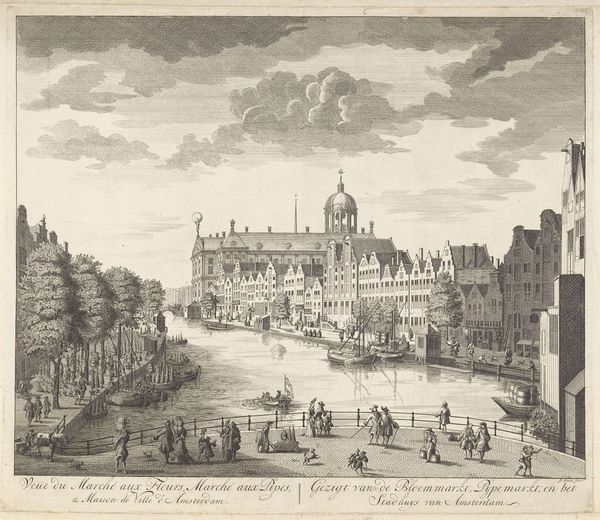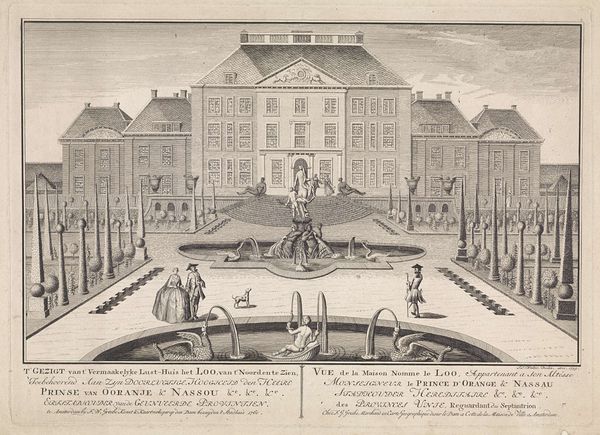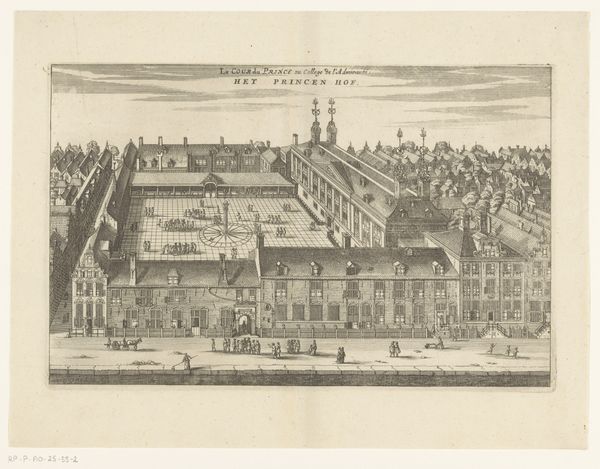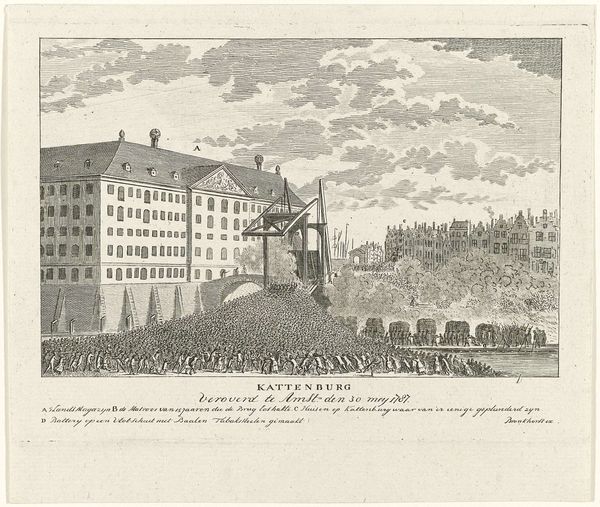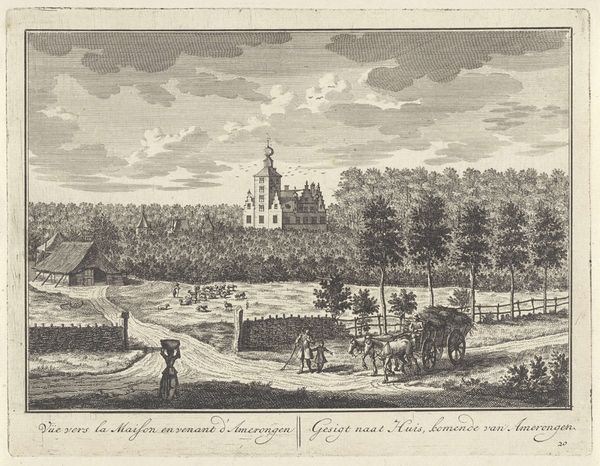
Dimensions: height 162 mm, width 212 mm
Copyright: Rijks Museum: Open Domain
Editor: So, this is "Achterzijde van Kasteel Zuilenstein," an engraving by Daniël Stopendaal, dating roughly from 1682 to 1726. It reminds me of looking at a dollhouse from a distance; everything is so meticulously placed. What symbolic significance might be lurking within this highly organized landscape? Curator: The garden itself becomes a symbol here. The clear lines, controlled nature, and posed figures, tell us about the aspirations of the time. It’s a portrait of control, but of what exactly? Look closely. Where does your eye naturally travel in this composition? Editor: I'm drawn from the couple in the foreground to the castle. It's like a stage. Curator: Exactly! The architecture of the house, a literal castle with strong verticality, combined with this formal garden setting are asserting wealth, power, and the family lineage. Do you see anything else that jumps out? Editor: The perspective is strange. The house is almost floating; its connection to the ground feels…tenuous. Is that a symbolic thing, perhaps commenting on the fleeting nature of wealth? Curator: An interesting observation. That disconnect also could suggest an isolation of power from the populace. Land was directly linked to social status, so owning such an elaborate structure and garden would project influence. Even today, isn’t a big house a status symbol? The garden becomes a codified language – each tree, each perfectly placed bush reinforces the patron's narrative about themselves. Editor: So it’s a carefully constructed message, linking this family with a legacy of power, but possibly at the cost of appearing disconnected. I learned more about what is unsaid in this visual composition! Curator: Precisely. The silent symbols can be the most eloquent.
Comments
No comments
Be the first to comment and join the conversation on the ultimate creative platform.
